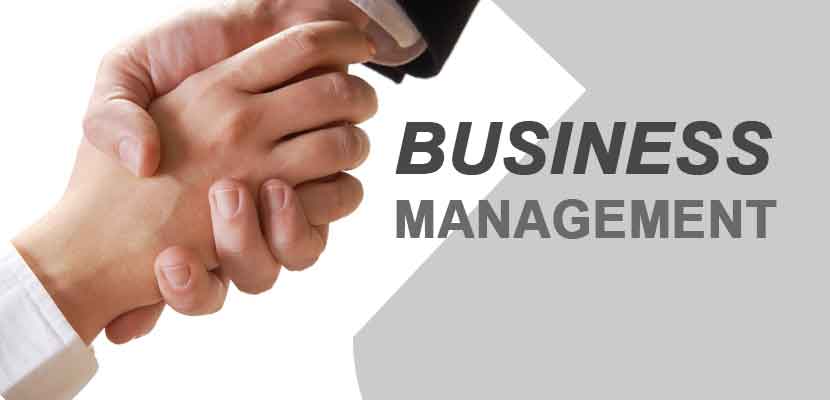Take Full Advantage Of Performance with SAFe For Architects in Your Agile Structure
Take Full Advantage Of Performance with SAFe For Architects in Your Agile Structure
Blog Article
SAFe Certification: Equipping Leaders in Scaled Agile Frameworks
The landscape of task monitoring is evolving, and SAFe Certification stands as a critical aspect for leaders looking for to apply the Scaled Agile Framework effectively. This accreditation furnishes specialists with crucial skills to promote cooperation and technology within their groups, ultimately enhancing organizational performance. The journey to ending up being an accredited SAFe leader includes more than just getting understanding; it encompasses comprehending the nuanced roles and responsibilities within agile environments. As we discover the details of SAFe Qualification, the effects for management efficiency and organizational success warrant deeper exam.
Recognizing SAFe Certification
SAFe qualification, which represents Scaled Agile Framework certification, is a credentialing program made to gear up professionals with the expertise and skills essential to carry out nimble methods at scale within their organizations. The SAFe framework offers an organized method that helps companies straighten their teams and manage bigger projects successfully, guaranteeing that dexterous approaches are applied constantly across numerous levels.
The accreditation encompasses different duties, including SAFe Agilist, SAFe Expert, and SAFe Program Specialist, each concentrating on different elements of the structure. The program emphasizes the value of lean principles, constant distribution, and collaboration amongst groups, fostering an atmosphere helpful to development and performance.
Individuals go through strenuous training that integrates theoretical knowledge with functional application, boosting their ability to lead nimble makeovers. The educational program includes subjects such as agile teams, program implementation, and profile management, guaranteeing that licensed specialists are fluent in all facets of the SAFe method.
Advantages of SAFe Certification
Obtaining a SAFe accreditation uses countless advantages for professionals wanting to improve their occupations in dexterous task monitoring. Most importantly, it gears up individuals with a detailed understanding of the Scaled Agile Structure, allowing them to successfully apply dexterous concepts throughout huge companies. This knowledge is important as companies increasingly embrace nimble methods to boost performance and adaptability.
Furthermore, SAFe accreditation enhances a prospect's marketability and career leads. As organizations seek certified specialists to lead their dexterous makeovers, qualified individuals can command greater wages and stick out in an affordable task market. Getting this accreditation demonstrates a dedication to constant learning and expert development, which is very related to by employers.
Networking possibilities also arise from SAFe accreditation, connecting people with a community of similar professionals and sector leaders. This can result in mentorship, collaboration, and understanding sharing, additional enhancing one's specialist experience.
Last but not least, accredited specialists are typically much better geared up to cultivate a culture of partnership and technology within their teams, driving effective end results in nimble jobs. Overall, the benefits of SAFe accreditation are manifold, making it a valuable investment for those in the active task management domain name.
The Qualification Process
The journey to accomplishing SAFe qualification entails a structured procedure designed to ensure candidates are well-prepared for nimble management functions. This procedure typically starts with picking the appropriate SAFe certification that lines up with one's occupation ambitions and organizational requirements, such as SAFe Agilist, SAFe Practitioner, or SAFe Program Expert.
Prospects are after that urged to take part in a comprehensive training program, typically carried out by a certified SAFe trainer - SAFe For Architects. These training courses cover crucial principles, concepts, and techniques of the Scaled Agile Structure, giving individuals with beneficial understandings and sensible expertise
Adhering to the training, prospects have to pass a certification examination to demonstrate their understanding and proficiency in applying SAFe principles. The tests are made to assess not only understanding however additionally the capacity to implement nimble methods properly within a scaled setting.
As soon as licensed, people get to a wealth of sources, including community networks and ongoing understanding possibilities, which additionally improve their agile management capacities. Preserving certification calls for constant expert advancement, ensuring that leaders stay present with advancing techniques within the framework. Ultimately, the qualification procedure is a rigorous yet satisfying pathway for those intending to stand out in agile management.
Obligations and roles
Reliable implementation of the Scaled Agile Structure (SAFe) depends greatly on clearly specified functions and duties within an organization. These duties are necessary for guaranteeing placement, effectiveness, and reliable partnership throughout teams.
At the group degree, key functions consist of the Scrum Master, Product Owner, and Agile Team Members. The Scrum Master facilitates the dexterous process, making certain that the team adheres to the SAFe principles while getting rid of obstacles.
At the program degree, the Release Train Engineer (RTE) plays a crucial role in orchestrating the Agile Release Train (ART), making sure smooth program implementation and alignment across several teams. Furthermore, the system engineer and company owner offer technical support and critical vision, specifically.
Continual Improvement in SAFe
Continuous improvement is a foundation of the Scaled Agile Framework (SAFe), driving companies to improve their processes, items, and overall efficiency. By promoting a society of constant improvement, SAFe motivates groups to routinely evaluate their end results and operations, recognize inefficiencies, and carry out strategies for improvement. This repetitive process not only boosts performance yet additionally straightens groups with the organization's tactical objectives.
Central to this approach are the Inspect and Adapt (I&A) workshops, which provide organized possibilities for representation and discovering. During these sessions, groups assess efficiency metrics, talk about difficulties, and create actionable understandings to lead future versions. Furthermore, the use of Agile Release Trains (ARTs) assists in cross-functional partnership, allowing teams to share ideal methods and drive cumulative renovation.
In addition, Lean-Agile leadership plays a crucial duty in advertising a state of mind of continuous renovation. Leaders are entrusted with promoting an environment where experimentation is motivated, and failings are considered as discovering opportunities. By installing constant improvement right into the organizational society, SAFe equips teams to stay agile and receptive to transforming market needs, ultimately boosting their capability to deliver worth to customers.

Conclusion
To conclude, SAFe Qualification functions as a vital device for leaders aiming to apply active practices properly within their organizations. By cultivating a detailed understanding of the Scaled Agile Framework, this accreditation enhances partnership, innovation, and task end results. In addition, it opens avenues for professional growth and networking amongst industry professionals, guaranteeing that qualified specialists remain skilled in browsing the complexities of today's vibrant organization landscape. Inevitably, SAFe Certification contributes substantially to business success and strength.
The landscape of project management is developing, and SAFe Certification stands as an essential component for leaders looking for to apply the Scaled Agile Framework successfully.Acquiring a Risk-free accreditation uses various benefits for professionals looking to improve their careers in dexterous task monitoring. The Scrum Master facilitates the dexterous procedure, making sure that the group adheres to the SAFe concepts while getting rid of impediments. By embedding constant renovation into the organizational society, SAFe empowers groups to continue to be agile and receptive to altering market demands, ultimately enhancing their ability to provide value to clients.

|
Master Agile Practices Via Comprehensive SAFe Qualification
In a significantly complicated company landscape, mastering Agile techniques with extensive SAFe qualification has emerged as an important proficiency for professionals intending to improve organizational efficiency. This accreditation not only supplies a deep understanding of the Secure framework however likewise cultivates vital skills for cultivating partnership and placement amongst teams. As organizations look for to browse the challenges of quick adjustment, the application of SAFe concepts offers a path to improved results. The journey to qualification involves more than simply theoretical knowledge; it needs a strategic technique to application that can significantly affect service agility. SAFe DevOps certification. What does this involve?
Comprehending SAFe Structure
At its core, the Risk-free framework makes up four levels: Team, Program, Large Option, and Portfolio. Each level addresses certain facets of Dexterous distribution, from taking care of tiny groups of developers to supervising multiple programs and aligning tactical initiatives with business objectives.
SAFe urges cooperation amongst cross-functional teams, fostering a setting where continuous improvement and innovation are extremely important. By emphasizing placement, transparency, and built-in quality, the structure outfits companies to react quickly to market adjustments while providing value to consumers.
Furthermore, SAFe supports numerous methods, such as Scrum and Kanban, enabling organizations to customize their method according to details job needs. This versatility makes SAFe a durable framework for organizations aiming to prosper in a rapidly evolving business landscape.
Benefits of SAFe Qualification
Regularly searched for in the Agile community, Risk-free qualification offers countless benefits for professionals and organizations alike. One of the key benefits is the improvement of skills and expertise in implementing the Scaled Agile Structure (Secure), which gears up individuals with the devices needed to drive successful Agile improvements. This certification indicates a dedication to professional development, making candidates a lot more competitive in the work market.
For organizations, having actually accredited specialists fosters a culture of constant renovation and partnership, essential for adapting to transforming market needs. It enables teams to align their deal with tactical objectives, ultimately enhancing performance and efficiency. Business with a greater percentage of SAFe-certified employees usually experience decreased time-to-market and boosted top quality of deliverables.
Furthermore, Risk-free qualification promotes networking possibilities with various other Agile practitioners, enabling the exchange of ideal methods and experiences (Leading SAFe). This joint network can dramatically add to individual and business growth. In summary, obtaining SAFe certification not just boosts specific capacities however likewise enhances the overall Agile maturity of a company, bring about lasting success in today's vibrant business environment
Key Components of SAFe
Building on the advantages of SAFe certification, recognizing the vital parts of the Scaled Agile Structure click this is crucial for successfully executing its principles. The Risk-free framework consists of 4 key levels: Team, Program, Large Solution, and Portfolio. Each degree addresses various facets of dexterous techniques, helping with alignment and delivery throughout the company.
At the Group level, cross-functional teams function collaboratively utilizing Agile methodologies, such as Scrum or Kanban, to supply step-by-step worth. The Program level concentrates on the Agile Release Train (ART), which is a long-lived team of Agile teams that intends, devotes, and carries out together. The Huge Option level addresses complex remedies that need several ARTs to work in performance, making sure coordination and assimilation.
Getting Ready For SAFe Certification
Planning for Secure accreditation requires a critical strategy to guarantee a thorough understanding of the structure. Acquaint yourself with the core principles and worths of the Scaled Agile Framework (SAFe) Evaluation resources given on the Scaled Agile internet site, including the Risk-free framework documents, study, and whitepapers, to construct a solid structure.
Next, consider signing up in a main Secure training course. These programs, led by accredited SAFe Program Professionals (SPCs), offer structured discovering experiences that cover useful applications and necessary principles. Engaging with instructors and peers can improve your understanding of the product.
Additionally, exercise with sample exam concerns to familiarize yourself with the format and kinds of questions you may encounter. Joining study hall or forums can facilitate knowledge exchange and provide assistance from fellow prospects.
Using SAFe in Organizations
Applying the Scaled Agile Structure (Risk-free) within organizations necessitates a structured approach that aligns groups and procedures toward a common goal. The effective application of SAFe starts with developing a clear understanding of its principles, consisting of placement, openness, and partnership. Organizations should first analyze their present processes and recognize locations for improvement, guaranteeing they are prepared for the cultural change that SAFe involves.
Training and certification for groups help furnish members with the needed skills and understanding to run efficiently within the Secure structure. This includes establishing Agile Launch Trains (ARTs), which serve as the backbone for delivering worth throughout the organization.
By constantly using Secure concepts and techniques, organizations can achieve greater agility, improve partnership, and eventually drive far better organization end results. Welcoming this framework positions organizations to respond swiftly to market changes and customer needs (Leading SAFe).

Final Thought
To conclude, understanding Dexterous techniques via thorough Secure qualification significantly enhances specialist capacities and adds to business performance. The expertise obtained from recognizing the Risk-free framework, together with its essential components, boosts and promotes successful changes collaboration amongst groups. In addition, acquiring this accreditation positions individuals favorably in an affordable task market, highlighting the importance of continuous enhancement and alignment within organizations. Accepting SAFe inevitably causes enhanced performance and better deliverables.
The SAFe (Scaled Agile Structure) framework serves as a structured technique for applying Nimble practices at range throughout large organizations. One of the main advantages is the improvement of skills and understanding in applying the Scaled Agile Framework (Risk-free), which outfits learn this here now individuals with the tools essential to drive successful Agile changes. In recap, getting SAFe accreditation not only boosts individual capabilities however likewise strengthens the overall Agile maturity of an organization, leading to sustainable success in today's vibrant organization setting.
Building on the advantages of SAFe accreditation, comprehending the crucial parts of the Scaled Agile Structure is vital for effectively implementing its principles.Executing the Scaled Agile Framework (Risk-free) within companies demands an organized method that lines up teams and processes toward a common goal.
|
Advance Your Career With SAFE Certification: Agile Competence Unlocked
In today's rapidly developing business landscape, obtaining SAFe accreditation can significantly improve your occupation trajectory by equipping you with crucial nimble proficiency. As firms increasingly look for professionals that can lead agile improvements, understanding the pathways to get this accreditation comes to be essential.
Recognizing SAFe Certification
SAFe Accreditation functions as a critical certification for specialists seeking to improve their jobs in agile project management. Developed by Scaled Agile, Inc., the Scaled Agile Structure (SAFe) offers a comprehensive technique to implementing nimble methods throughout large organizations, making it vital for specialists aiming to navigate complicated job atmospheres successfully.
The qualification procedure encompasses various levels, including Risk-free Agilist, SAFe Specialist, and SAFe Program Specialist, each targeting different roles within agile groups. These qualifications are designed to equip professionals with the understanding and tools required to lead active improvements, foster cooperation throughout groups, and boost task distribution end results.
Recognizing Secure Qualification involves identifying its emphasis on aligning strategy with implementation, advertising a society of continual enhancement, and leveraging active principles at scale. This structure not only enhances specific expertises yet additionally adds to organizational agility, enabling businesses to react quickly to market changes and consumer demands.
Attaining Risk-free Certification signifies a dedication to specialist growth and a strong structure in active methods, positioning people as useful possessions in their organizations. By welcoming this qualification, experts can enhance their ability set, ensuring they continue to be competitive in a rapidly advancing task market.
Benefits of SAFe Qualification
Acquiring SAFe Qualification provides numerous benefits for professionals in the dexterous job management sector. This certification not just improves individual qualifications however additionally demonstrates a dedication to grasping the Scaled Agile Structure, which is progressively recognized by companies. With a SAFe accreditation, experts can validate their expertise and skills in active approaches, making them a lot more affordable in the job market.
One of the crucial advantages is the capacity to lead nimble makeovers within organizations. Qualified individuals are furnished with the approaches and tools needed to implement and scale active techniques efficiently, driving effectiveness and performance. Companies with SAFe-trained specialists often experience enhanced positioning throughout groups, fostering better partnership and development.
Furthermore, Risk-free Certification opens up doors to networking chances within the nimble community. Specialists can get in touch with like-minded individuals, share best practices, and stay updated on market patterns. The accreditation likewise gives accessibility to unique sources, consisting of webinars and workshops, which can better boost one's experience.
Inevitably, acquiring SAFe Certification equips experts to advance their professions, contribute meaningfully to their organizations, and lead the cost in active excellence. SAFe For Architects.
Pathways to Get Accreditation

To start, candidates typically take part in a Secure training course, which acts as the foundational step for certification. These training courses SAFe Agilist are helped with by SAFe Program Professionals (SPCs) and cover crucial concepts, methods, and duties within the Secure framework. After completing the training, candidates need to pass a certification examination to confirm their knowledge and skills.
There are multiple qualifications available, such as Risk-free Agilist (SA), Secure Practitioner (SP), and Risk-free Scrum Master (SSM), among others. Each qualification requires details training sessions and evaluations, allowing experts to choose a path that aligns with their occupation goals.
Additionally, maintaining Risk-free certification requires recurring education and revival, guaranteeing that specialists stay present with advancing Agile methods. By purposefully selecting the proper training and qualification paths, people can significantly improve their expertise and profession trajectory within the Agile landscape.
Real-World Applications of SAFe
Applying the SAFe framework in companies has proven to be extremely efficient in enhancing productivity and alignment across teams. This methodology promotes partnership amongst various divisions, permitting groups to work in the direction of a linked collection of objectives. By breaking down silos and promoting interaction, SAFe allows companies to respond swiftly to market changes and client requirements.

Furthermore, SAFe is crucial in improving project presence via metrics and reporting devices, enabling stakeholders to make enlightened decisions. It additionally encourages a society of continual renovation, promoting routine retrospectives and adaptation of techniques. Ultimately, the real-world applications of Secure show its versatility and efficiency in driving effective end results throughout numerous markets, making it a vital framework for modern-day companies.
Career Development Opportunities
The adoption of the Secure framework not only boosts business performance however additionally opens up considerable occupation advancement opportunities for professionals within the Agile and job monitoring areas. As organizations progressively embrace Agile approaches, the demand for SAFe-certified experts continues to increase, developing an one-upmanship for those outfitted with this qualification.
SAFe qualification uses professionals access to a range of duties, including Agile Release Train (ART) functions, Scrum Masters, and Launch Train Engineers. People can transition into leadership positions such as Program Supervisors or Profile Supervisors, thus raising their obligations and influence within the company. The qualification additionally demonstrates a commitment to constant understanding and flexibility, high qualities extremely valued by companies.
Furthermore, specialists with SAFe qualification frequently delight in greater making potential. Sector records indicate that qualified people generally regulate salaries that exceed those of their non-certified peers. The networking chances afforded by Risk-free neighborhoods can lead to important links and profession leads.
Final Thought
Finally, acquiring Risk-free accreditation dramatically boosts specialist credentials in the world of dexterous methods. This qualification not just promotes mastery of nimble practices however also promotes possibilities for career innovation throughout different roles, including Scrum Masters and Program Supervisors. By equipping people with essential abilities and knowledge, Secure qualification cultivates management abilities necessary for driving effective active transformations within organizations, inevitably contributing to greater earning potential and important connections within the nimble community.
Obtaining Secure Qualification uses many advantages for experts in the nimble task management field. With a Secure accreditation, professionals can verify their knowledge and skills in agile methodologies, making them much more affordable in the job market.
These programs are promoted by SAFe Program Professionals (SPCs) and cover necessary concepts, practices, and duties within the Risk-free framework.In conclusion, obtaining SAFe accreditation dramatically improves expert credentials in the realm of nimble techniques. By equipping individuals with necessary skills and understanding, Risk-free qualification cultivates leadership capabilities essential for driving effective dexterous transformations within organizations, inevitably contributing to higher earning capacity and useful links within the dexterous neighborhood.
} Report this page